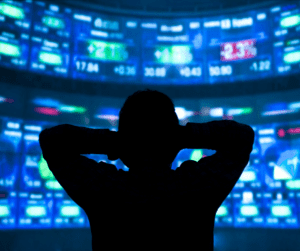A historical view of recession
So, we’re hearing a lot these days about a looming recession. From a historical view, we’re already in a recession by the traditional definition of two successive quarters of decline in the gross domestic product (GDP). The U.S. has already experienced two consecutive quarters of negative GDP growth in 2022 but the National Bureau of Economic Research has yet to call our current condition as a recession.
The Bureau of Economic Analysis (bea.gov) measures the GDP. In Q1 GDP decreased 1.6 percent. The reported decline for Q2 was .6 percent and Q3 GDP will be estimated on October 27.
Unemployment rates are reported by the Bureau of Labor Statistics. Unemployment rates are a lagging economic indicator since most employers tend to wait to resume hiring until there is greater certainty that the overall economy is back on track following a recession. Therefore, we often see unemployment figures peaking after a recession ends. The current unemployment rate is the U.S. is 3.7 percent down from 5.2 percent just over a year ago.
Understanding unemployment rates and the impact on the economy is tricky. Most experts say that a steady unemployment rate of 4 to 5 percent is ideal. If the unemployment rate is too low, it can result in negative consequences like difficulty recruiting and retaining employees costing businesses more to hire and lower productivity in an over-staffed job market. It could also indicate a recession on the horizon (or already here?).
With benefit of hindsight, we can look at historical evidence, contributing factors, and durations of the 19 recorded recessions in U.S. history with the first dating all the way back to 1797. The duration of recessions varies. The longest contraction since the Great Depression occurred from December 2007 to June 2009. Then there was the Covid response economic debacle of 2020 which resulted in a two-month recession, the shortest on record.
On average since 1948, a recession has occurred about every six years. Prior to 2007 a recession lasted an average of 11 months.
You may be watching the stock market closely right now as well. The S&P 500 index’s 2022 losses are 25 percent to-date while the Nasdaq has fallen nearly 33 percent this year and the Dow Jones industrial average has seen a 2022 decline of nearly 21 percent. It’s difficult to see hard-earned wealth accumulated over a lifetime decimated. Hard-working, middle-class Americans are particularly impacted by such losses which can often mean delayed retirement and other consequences. Whereas unemployment rates are a lagging indicator of recession, stock market performance is a leading indicator of both recessions and expansions.
For stock market investors, the silver lining is by the time we’re at the bottom of the current recession it is likely that the stock market will have significantly recovered because it is a leading indicator of the overall economy by nine to 12 months.






